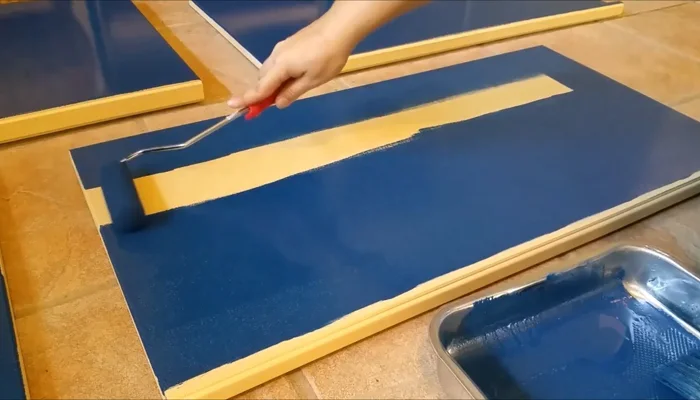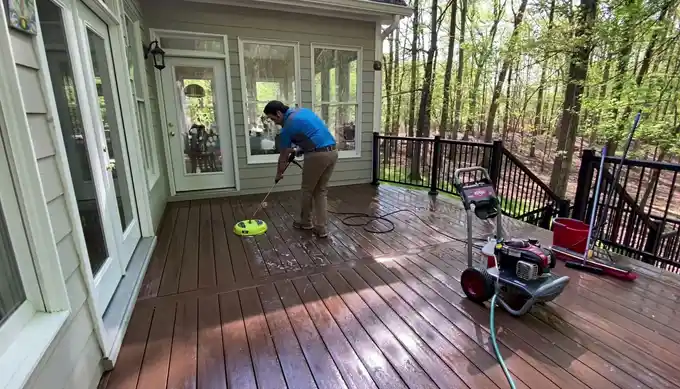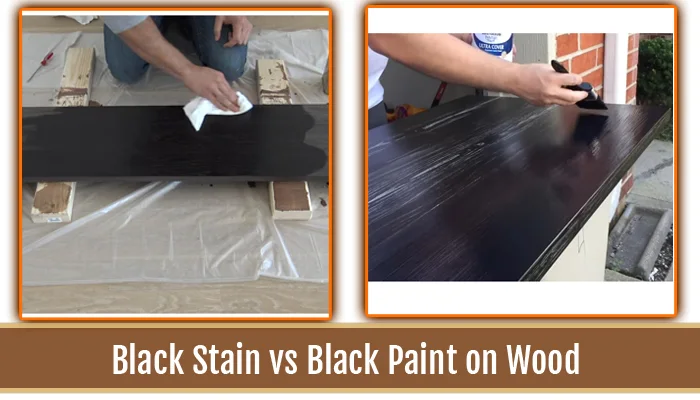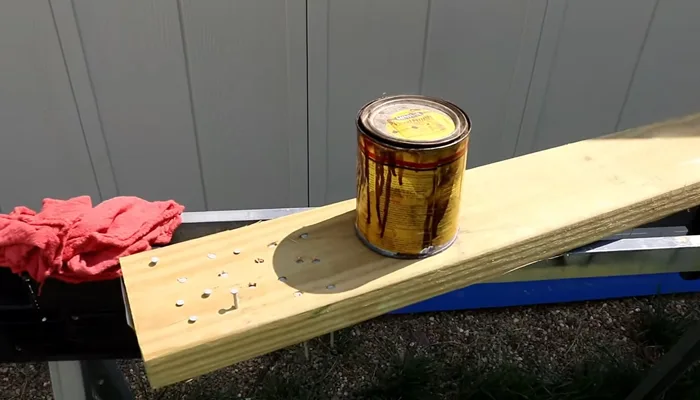WoodenuKnow.com is a participant in the Amazon Services LLC Associates Program, an affiliate advertising program designed to provide a means for sites to earn advertising fees by advertising and linking to Amazon.com and may earn from qualifying purchases.
The cabinets in your kitchen are often exposed to a lot of activity; spills, splatters, and general wear can cause them to appear a bit dated over time. If your cabinets need a facelift, consider giving them a new coat of paint.
Oil-based paint is a suitable choice for painting cabinets because it provides a durable and long-lasting finish. It is also relatively simple to paint kitchen cabinetry with oil-based paint if you follow the proper steps.
This is why it is a good idea to figure out how to paint kitchen cabinets with oil based paint the proper way. For painting cabinets, oil-based paint provides a durable and long-lasting finish.
The process of painting kitchen cabinets with oiled paint may prove problematic if you are not aware of the right steps to follow. Let’s see how to paint cabinets with oiled paint, step by step.
Why Use an Oil-Based Paint on Kitchen Cabinets?
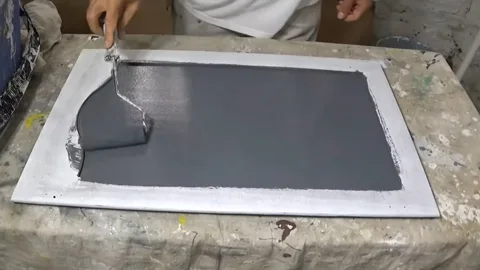
Kitchen cabinets can be subject to a lot of wear and tear. Oil-based paint provides a durable and long-lasting finish that can withstand all this activity.
Moreover, oil painting may require more time than latex painting, but as long as it’s done right, it will also remain glossy and chip-free for a longer time.
Oiled paint is a good choice for painting cabinets because it:
- Provides a durable and long-lasting finish
- Is resistant to spills and splatters
- Has a smooth finish
- Is easy to clean
In any kitchen with fancy cabinets or simple laminate cabinets, oiled paint should be used to achieve a beautiful and lasting finish.
How to Paint Kitchen Cabinets With Oil Based paint
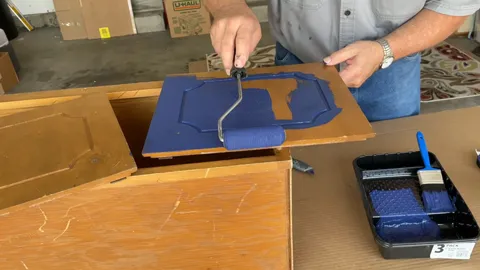
Painting your bare wood cabinets can be one of the most dramatic improvements you can make. If you want to paint cabinets with oiled paint, here are the steps you need to follow:
Step 1: Prepare the Surface:
The first step is to clean the cabinets properly and repair any damage that may be present. You can use mild detergent and a soft cloth to clean any dirt or grease from the area.
Next, apply putty to any cracks or holes that need to be filled. Once the putty is dry, lightly sand the piece until it is smooth with 100-120 grit sandpaper. Once this is done, use a tack cloth to clean any dust that may be present.
Step 2: Apply a Primer:
After the area is sanded, apply a primer. A good primer should be applied to all cabinetry flat surfaces with long, even strokes. This will help the paint to adhere better and provide a more even finish.
Step 3: Paint the Cabinets:
Once the primer is dry, you can begin painting the cabinets. Use a natural bristle brush or roller to apply the paint evenly. Make sure to use long, even strokes and to paint the inside of the cabinets as well as the cabinet door fronts.
When painting cabinets with oiled paint, wear protective goggles and a respirator as they can be harmful if inhaled.
Step 4: Apply a Topcoat:
After the paint is dry, apply a generous top coat to protect the paint and give the cabinets a beautiful shine. You can use a brush or roller to apply the topcoat evenly. Make sure to let the second coat dry completely before using the cabinets.
Where to Paint and Where Not to Paint?
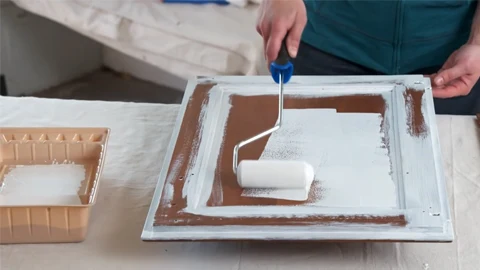
Before beginning to paint your cabinets with oiled paints, it is important to know where you can and cannot paint.
Painting areas include:
- Cabinet doors: front and rear
- Drawer fronts: front and rear
- Cabinet boxes: tops and sides
You should avoid painting:
- Formica or plastic laminate flat surfaces
- Glass or mirrored surfaces
- Any area that is not sanded properly
- Inside cabinet interiors
- Top of cabinet boxes
If you are not sure whether you should paint a certain surface, it is always best to consult with a professional. When painting cabinets with oiled paint, be sure to follow the proper steps in order to achieve a beautiful and long-lasting finish.
Caring for Painted Cabinets
After painting cabinets with oiled paint, it is important to know how to maintain them. Here are a few tips:
- Do not use cleaners that contain ammonia or abrasives as they can damage the paint
- Use a soft damp cloth or sponge when cleaning the cabinets
- Wipe up any spills immediately
- Be careful not to scratch or scuff the surface
With proper care, your newly painted cabinets will last for many years to come. Try to avoid using harsh cleaners or scrubbing the surface too hard as this can damage the paint. If you follow these tips, your cabinets will stay looking like new for years to come.
Things to Consider When Painting the Kitchen Cabinets
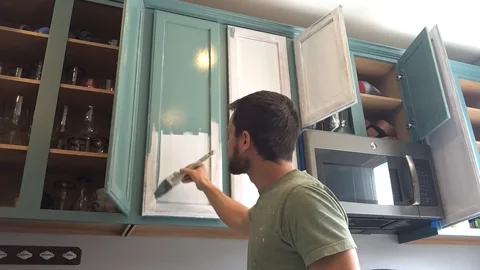
If you are planning on painting your cabinets with oiled paint, you should be aware of the following:
01. Choose the Right Primer:
When painting cabinets with oiled paint, it is important to use a primer that is specifically designed for use with oil-based paints. This will ensure that the paint adheres properly and provides a smooth finish.
02. Wear Protective Gear:
When working with oil-based paints, it is important to wear protective gear such as gloves, goggles, and a respirator. These products can be harmful if they come into contact with your skin or are inhaled. Also, wear a respirator to stop the spread of VOCs (volatile organic compounds).
03. Use Caution When Cleaning:
Be careful when cleaning your cabinets after painting them with oiled paint. Do not use harsh cleaners or scrub the surface too hard as this can damage the paint. Instead, use a soft damp cloth or sponge and wipe up any spills immediately.
4. Let the Paint Dry Completely:
Before using your cabinets, make sure to let the paint dry completely. This will usually take at least 24 hours. Once the paint is dry, you can apply a topcoat for added protection.
5. Follow the Proper Steps:
When painting cabinets with oil-based paint, it is important to follow the proper steps in order to achieve a beautiful and long-lasting finish.
Be sure to sand the surface properly to get a smooth surface, apply a primer, and use caution when cleaning. With proper care, your newly painted cabinets will last for many years.
6. Consider Your Options:
When choosing paint for your cabinets, you have a few different options. Oil-based paint is a good choice for cabinets that will be subject to a lot of wear and tear.
If you are looking for a more durable option, consider using acrylic enamel paint. This type of paint is more resistant to scratches and stains. Also, consider avoiding dark paint, which may act as a heat magnet.
Furthermore, high-gloss finishes are more durable than matte finishes and are far easier to maintain without dulling the color over time. Therefore, you should opt for semi-gloss or high gloss instead of satin, matte, and eggshell.
7. Use a Topcoat:
After painting your cabinets with oiled paint, you may want to consider applying a topcoat or second coat. This will provide an extra layer of protection and help keep your cabinets looking new.
8. Care Your Cabinets:
Once you have painted your cabinets with oiled paint, it is important to know how to care for them properly. Be sure to use a damp cloth or sponge when cleaning and avoid using harsh cleaners.
Wipe up any spills immediately and be careful not to scratch or scuff the surface. With proper care, your cabinets will stay looking like new for years to come.
You should keep these factors in mind when painting your cabinets with oil-based paint.
FAQs
Take a look at some frequently asked questions about painting cabinets with oil-based paint:
01. Do You Use Brushes or Rollers for Oil Paints?
When painting cabinets with oiled paint, you can use either a brush or roller. Just be sure to choose one that is specifically designed for use with oiled paints.
02. Which is Best to use Brush or Roll Oil Type Paint?
During the drying process of oil paint, you will barely notice brush strokes if you use a premium bristle paint brush. In order to achieve a more textured appearance, you may want to use a roller with no more than a quarter-inch nap.
03. How Can I Get a Smooth Surface with Oil Paint?
One way of achieving a flawless finish with oil paint is to blend the paint to the best of your ability, erasing any troughs, ridges, or patches. Use a top coat to give your cabinets an additional layer of protection and help keep them looking new.
04. What Type of Roller Should You Use for Oil-Based Paint?
When painting cabinets with oil-based paint, you should use wool or mohair. Avoid using a foam roller as this can leave behind bubbles.
In Conclusion
Painting your kitchen cabinets with oil-based paint can be a great way to achieve a beautiful and long-lasting finish. Just be sure to follow the proper steps we have outlined on how to paint kitchen cabinets with oil based paint and use caution when cleaning.
When painting your cabinets with oil-based paint, it is important to keep in mind the proper steps to ensure a beautiful and long-lasting finish. Be sure to sand the surface properly, apply a primer, and use caution when cleaning. With proper care, your newly painted cabinets will last longer.
Related:

